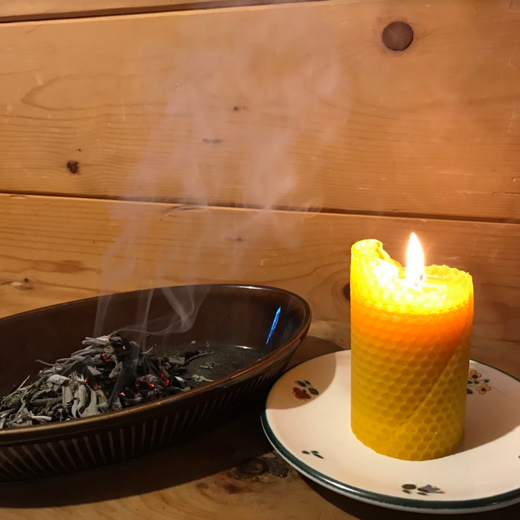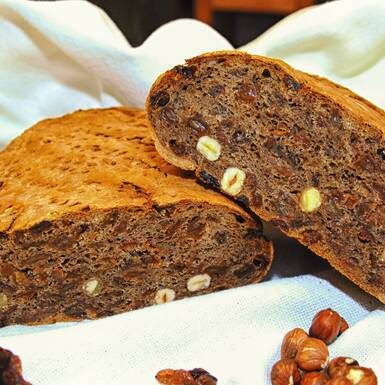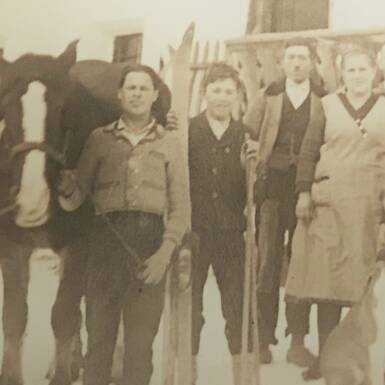- Traditions
The turn of the year - past and present
Such turning points in the calendar or in nature have always been celebrated differently.
People used to be much more connected to natural cycles. It was essential for survival to be able to interpret the signs of nature and to live with the earth. In the following story you can read which symbols have been preserved in different forms until today, why the "Peasants' New Year" actually only took place in February and why pigs are still regarded as popular lucky charms.
The turn of the year in various forms
The turn of the year is celebrated here, as in almost every country in the world, on 31 December, as the transition to the new calendar year. There are still small protest movements here and there, especially in Switzerland, which celebrate New Year's Eve on 13 January out of resistance to the Gregorian calendar reform.
The yearly cycle of the Celts was somewhat different in its original form. They saw the "dark time" that began with Samhain (today's Halloween) as the actual start of the new year. In their view, the year was born out of darkness. This "dark" time of birth (whereby "dark" was by no means seen as bad, but as part of the whole, as deeply feminine) was followed by the new beginning at Imbolc, today's Candlemas.
Many indigenous people still have a different relationship to "time" today. For them it is not a linear construct. It is a circle. The year comes to an end, just as summer comes to an end. And spring follows winter. Over and over again.
The Christmas and New Year period in the past
Even in the old days, the Christmas and New Year periods were very special. Work in the fields was finished, people spent the cold days repairing buildings and tools and making new clothes, spinning wool, sitting by the fire and telling each other stories. Christmas traditions that are still lived today included:
The twelfthtide
Especially during the twelfthtide (in german "Raunächte"), smoking was done in the house and on the farm. Dried resins and plants that had been collected during the summer were placed on the glowing coals from the oven. The resin from spruce and coniferous trees as well as dried mugwort, sage, thyme and much more spread a pleasant scent and were said to have a cleansing and purifying effect.
People went through the rooms praying and asking for protection and blessings for people, animals, house and farm. The incense mixtures were supposed to drive out evil spirits and invite good energies.
How many Raunächte there are varies from region to region. In the Glemm Valley, the following are among the most important: St Thomas' Eve on 21 December, Christmas Eve on 24 December, New Year's Eve on 31 December, the beginning of the year on 1 January and the Three Kings' Day on 6 December.
In other regions, 12 Raunächte were celebrated - from 24 December to 6 January. The nights were also used for oracles and the respective night counted for the month of the coming year. (The first night for January, the second for February and so on).
31 December - and how the turn of the year became New Year's Eve
As a result of the calendar reform mentioned above, the late Pope Silvester I, who died on 31 December 335, became the eponym of this night.
In the past, people used to drive away the evil spirits of the old year and the darkness with fires and torches, noise and ruckus at the turn of the year. Today, people bid farewell to the old year with rockets and luminous fireworks and welcome the new one with atmosphere.
In Celtic mythology, it was the boar, used by the goddess Freya as a mount, that "pushed" the new year. This ancient symbol probably became the piggy lucky charm, which no New Year's Eve party should be without. Ladybirds are also given as gifts - animals that had a very special meaning for the Celts because of the magical colours red, white and black. The chimney sweep reminds us of the importance of keeping the chimney (formerly the connection to the Otherworld) clean. This had the additional practical function that a cleaned chimney protected against the danger of fire.
Caroling & the Blessing of Jesus
From the turn of the year until 6 January, the day of the Three Kings, carol singers go around. Dressed as kings, they knock on people's doors and sing traditional songs. With chalk "C+M+B" together with the current year is written on the doors. However, the abbreviations are not Caspar, Melchior and Balthasar, as is often assumed, but "Christus Mansionem Benedicat" - "Christ bless this house".
The colloquially called "Peasants' New Year"
The colloquially called "Peasants' New Year" takes place at Candlemas on 2 February. On this date the new working year of the farmers, farmhands and maids began. New jobs were taken up, nature began to sprout and people looked forward to spring. You can read about the traditions of Candlemas in this story.
The traditions that exist today on New Year's Eve vary from country to country and from region to region. In Saalbach, the ski instructor shows and torch runs are definitely among them.
We wish you a happy New Year and a wonderful New Year!














